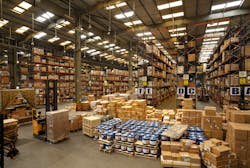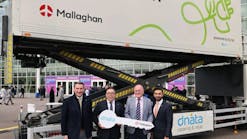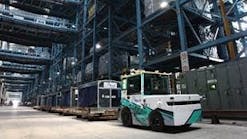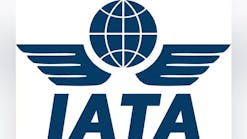Bengalaru has become synonymous with India’s pioneering role in the development of information technology and its advanced IT infrastructure. The Indian diaspora in the U.S. often uses the hyperbole “India’s Silicon Valley” when it refers to Bengalaru. The city, formerly known as Bangalore, is also fast becoming the regional air cargo hub with plans to expand and upgrade its infrastructure and deploy ground handling equipment.
Kempegowda International Airport (KIAB / BLR) Airport, has received a facelift, making it more appealing to the needs of modern-day life as air transport of people and goods becomes increasingly popular in the subcontinent. According to Bangalore International Airport Ltd. (BIAL), the airport operating company, the airport has developed into a regional hub with the promise of strong growth in air cargo traffic and air travel.
Spread across 4,000 acres, the airport is bolstering its infrastructure which includes two independent parallel runways, extensive passenger options and stands, a passenger terminal (T1) and multiple cargo terminals. A second terminal (T2) is also being constructed and should be ready for commercial use in 2022, according to airport sources.
Its geographical location, supported by easy access to the major manufacturing hubs of South India, has strengthened the airport’s status as the “preferred gateway” for air cargo in South India. The presence of two big cargo terminal operators – Air India SATS (AISATS) and Menzies Aviation Bobba Bangalore – has added to the allure of BLR Airport.
“The BLR airports’ current annual cargo capacity is 720,000 metric tonnes (MT), and is expandable to 850,000 MT. Our aim is to expand the cargo infrastructure to provide a capacity of 1 million MT in the next few years,” Satyaki Raghunath, BIAL’s chief strategy and development officer, explains, pointing out that BLR airport is currently ranked as India’s third cargo-handling airport based on annual cargo handled.
In the past, many Indian airports faced the disadvantage of having inadequate or outdated infrastructure facilities; however, amid the fierce competition and sharp rise in global air trade – and also air travel, they are upgrading or expanding their existing infrastructure to meet the heavy demand generated in traffic.
BIAL’s infrastructure includes two dedicated freighter stands, two modern cargo terminals, round-the-clock operations running on automated systems, a consolidation facility, and India’s first dedicated courier terminal.
“The airport has some of the most mechanized cargo terminals in the country, with facilities such as automated storage and retrieval systems (ASRS), elevated transfer vehicles (ETVs), very narrow aisle trucks (VNAs), high-rise racking systems, lift and run systems for ULD movement, reach stackers with bar code readers and handheld devices. This enables BLR Airport to process all types of cargo, including pharma and temperature-controlled products, perishable cargo, electronics, hardware, vegetables, as well as animals,” Raghunath says, adding that Bengalaru Airport is India’s first airport to be compliant with IATA’s e-freight initiative.
“We are the first airport in India to be IATA e-freight compliant, the first and only airport in India to have partners with IATA Safety Audit for Ground Operations (ISAGO) compliance. Our partners are ISO: 9001 2008 and GDP certified as per WHO standards. They are also ACC3 compliant as per European Union guidelines and TAPA certified,” he says.
Infrastructure expansion acquired some urgency as the airport’s air cargo volume rose from 132,125 MT in 2008 to 386,780 MT In fiscal year 2018, a three-fold increase in its first decade of operations.
Other features include an airport public bonded 10,000 square foot warehouse, and four cargo terminals (Blue Dart Express Cargo Terminal, AISATS Coolport, AISATS and Menzies Aviation Bobba Bangalore). BLR is also India’s first airport to have its terminals compliant with ISAGO, besides maintaining a fully operational drug control lab and an animal quarantine for safe movement of animals.
According to Raghunath, the airport offers connectivity for air cargo shipments to 70 domestic and 20 international destinations. Export traffic includes agricultural perishable items, pharmaceuticals and textiles, among others, while imports generally include electronics, heavy machinery, auto components and more.
The major export cargo destinations are the Middle East, Europe and North America while imports arrive, mostly, from the Far East, Europe and the Middle East.
“There are currently 14 dedicated freighters operating to BLR Airport, and there is also additional belly capacity in passenger aircraft. On an average, we have about 30-33 daily freighter movements at BLR Airport,” Raghunath notes.
He maintains that BIAL has made “continuous efforts to improve operational efficiency by providing state-of-the-art infrastructure, market-leading technology and customer service.”
These efforts include operationalization of a public bonded warehouse and an express cargo terminal.
While the public bonded warehouse will facilitate re-exports, long-term storage of bonded cargo and value-added services (labeling, packing/re-packing, etc.), the express cargo terminal will ease doing business and reduce transaction time and costs for the shipper by providing a dedicated facility for express courier shipments, according to Raghunath.
A number of features have been added to strengthen the airport’s technological prowess and boost the cargo operations. The features include the Airport Cargo Community System (ACS), a digital platform for quicker processing and reducing duplication of information and streamlining processes. The IoT Solution is particularly helpful to shipping time-sensitive pharma and perishable products, providing shippers and carriers real-time temperature data of the shipments. What’s more, the Envirotainer is an electronic container facilitating pharmaceutical companies and their logistics partners to move temperature-sensitive cargo worldwide while maintaining the integrity and quality of products throughout the transportation.
“We believe technology is crucial for enabling seamless operations and will continue to explore and evaluate and bring innovations in technology to enhance cargo operations,” Raghunath emphasizes.
Other cargo-boosting initiatives include a five-acre dedicated truck-parking facility and a road feeder service catchment area connectivity, with its bonded and non-bonded trucking service called LogiConnect from various parts of South India.
Technology is the key for the airport to assert its position in a fiercely competitive environment. Collaborating with foreign high-tech corporations could become a game-changing factor for the airport’s future.
Indeed, U.S. based IBM and BIAL recently announced a 10-year partnership for IBM and Kyndryl to provide IT solutions to create a so-called “Airport in Box” platform aimed at helping the end-to-end travel experience for passengers at the airport.
BIAL selected IBM Global Business Services, IBM hybrid capabilities and Kyndryl, the new, independent company that will be created following the separation of IBM’s Managed Infrastructure Services business to design and implement a next generation architecture with robust and dynamic delivery model. The platform will also enable BIAL to improve employee productivity, better utilization of IT assets, reduce costs and improve incident management.








